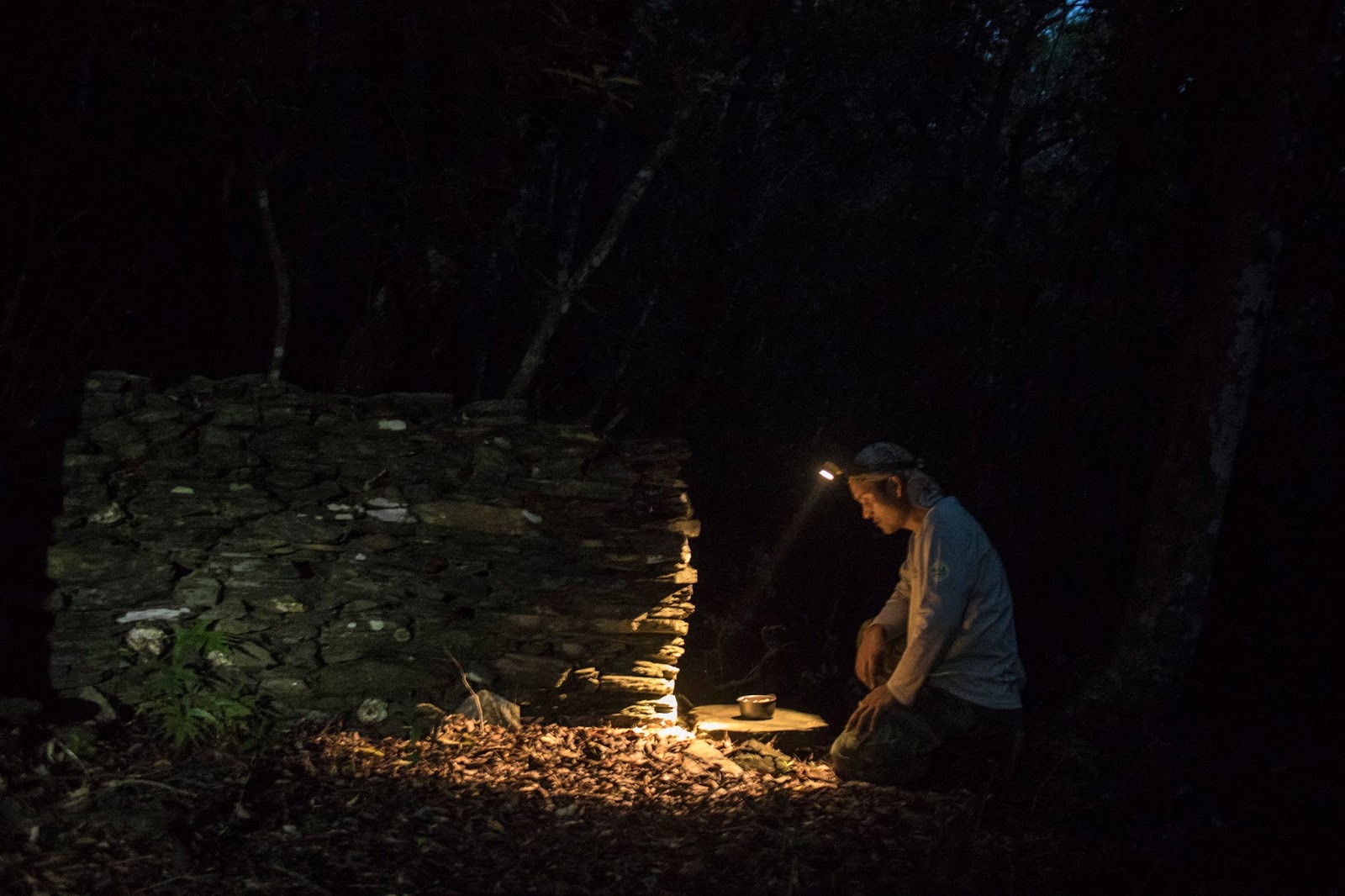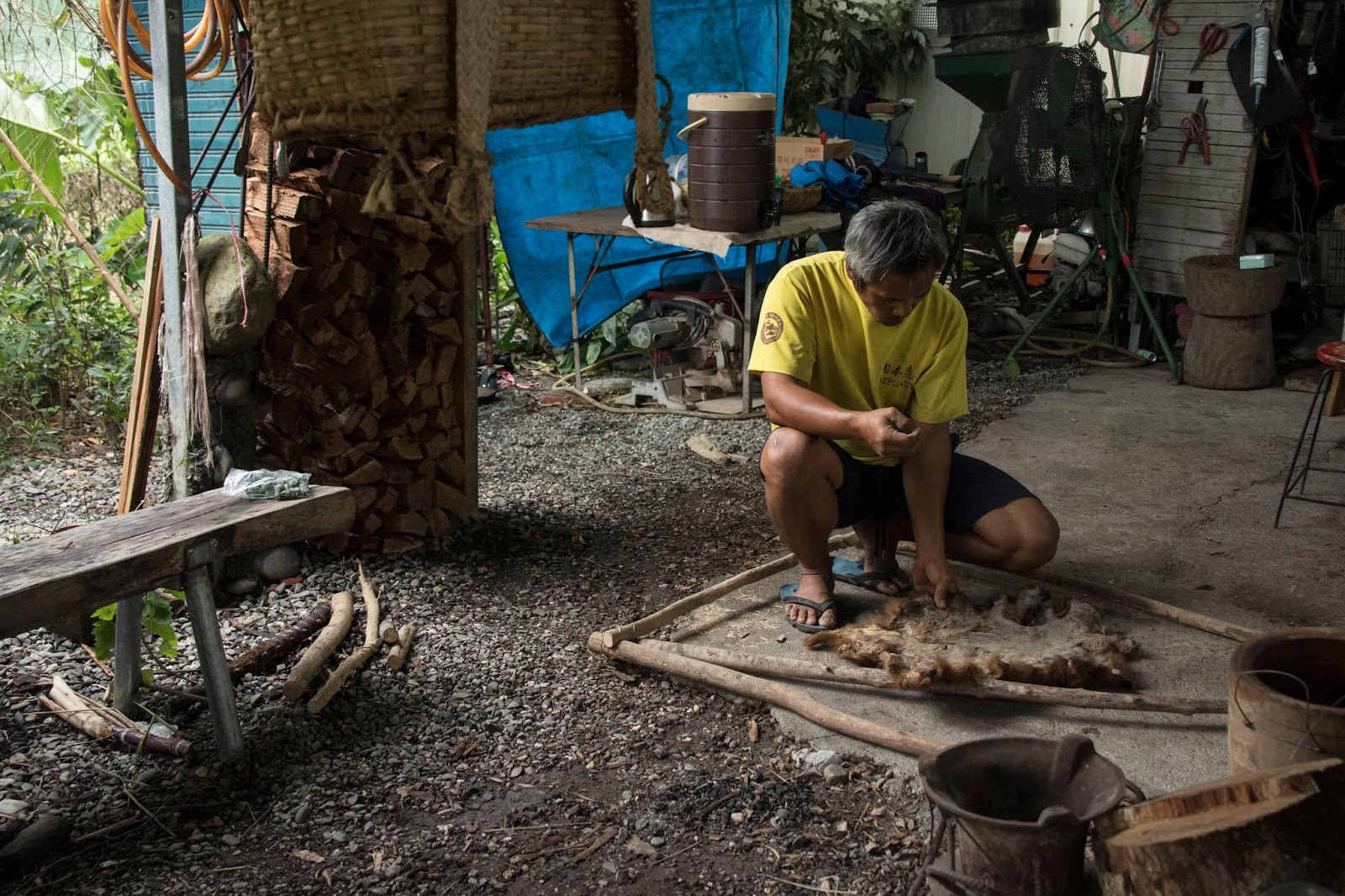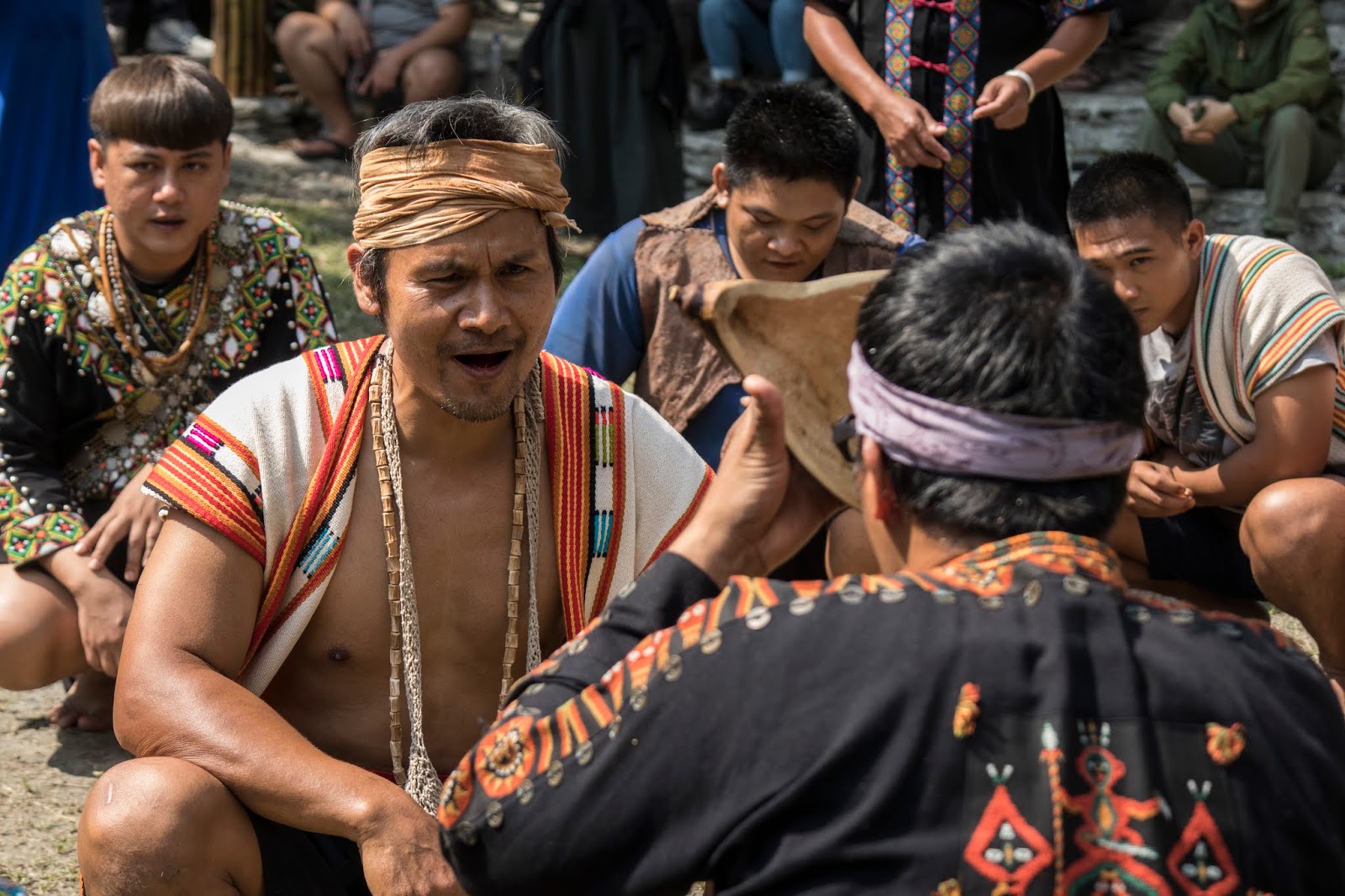Photo credit: 內本鹿Pasnanavan
Pasikaw Bunun, 內本鹿 Pasnanavan, Taitung Taiwan
Interviewee: Tama Dahu
Interviewer: Wei Ling Hung, Glee Lin
Bunun, one of the indigenous tribes widely dispersed across Tawian’s Central Mountain Ranges. They have five distinct communities: the Takbunuaz, the Takituduh, the Takibaka, the Takivatan, and the Isbukun. They started to explore new territory for hunting and slash-and-burn farming from the western flank of Central Mountain ranges to the eastern flank since 18 century.
(https://en.wikipedia.org/wiki/Bunun_people)
At the beginning of the world, a giantess is wandering alone on this land. She quietly sat there and looked into the distance for a long time. Her every sigh turned into thick white fog moisturising the land. The land started to flourish and grow many giant trees, flowers, birds and other animals. Her body and two legs also started to transform. Her body transformed into Yu Shan Mountain Range (玉山山脈). Her two toes turned into two lower mountains which are Mount Guntai (郡大山) and Xiluanda Shan (西巒大山). Bunun believe their ancestors come from giantess’s toes, and they are giantess’s offspring. They cultivated, hunted and migrated across mountains. They also believe all alive beings are family and can transform into each other.
During Japanese colonial era at the beginning of 20-century ,to govern aboriginal people, the government has built many trails and police posts surrounding their villages. However, since the intensity of conflicts and attacks increased, most indigenous villages, family units had been resettled several times. Around the ‘70s, KMT government began developing the forestry industry and constructing new trails for conducting large-scale logging. As a result, more and more Bunun families were forced to move to the lowland from the mountains. They traditionally lived in small family units. Now different families live in village units divided into administrative regions. It is a collective memory of migration for most of the aborigines in Taiwanese indigenous history. Those trails buried by trees and bushes in forests became their ‘roads’ for contacting other villagers and traces for home.
From the 90s’ indigenous cultural revival and land rights movement began to thrive. The searching road back home movement became one of the significant actions taken as a cultural revival event. Why are habitats and the environment around so important for indigenous cultural preservation, including Bunun? One Bunun family unit used to live in one house. The population of one family was between 20 to 60 people. All the families used the same barn, the same stove, shared resources and work together. The house’s composition included the main house, attached house, working house, storage room and livestock house. The entire living circle, including ‘huma’ (arable land) and ‘hanupan’ (hunting ground), was also centred on the house. On the arable land and hunting grounds, there were also industrial huts and hunting huts built. The house is where the daily life is and where the souls of ancestors are buried after death. (only accidental death is not allowed to be buried in the house) In Bunun language,’ bunun’ means ‘human’, ‘min bunun’ means learning to be human. The daily life, life rituals and rituals of the Bunun people revolve around these spaces from birth to death, nurturing them from a min bunun to be a real bunun (an actual human).
The community that Wei Ling and Glee have contacted and visited in, named Pasikaw. Pasikaw is one of Bunun communities that have traced the old road back to their mai-asang(original community), Laipunuk. One of family units, Takishusungan(霍松安),leading this trip established a foundation called Pasnanavan, which mean ‘the place for learning’ in Bunun language. (http://laipunuk.blogspot.com/ )
Bunun people believe roads need to be ‘walked’ physically and spiritually; otherwise, they will not exist. The fire on the kitchen stove must be on, and a house called home unless someone lives in. Takishusungan family and Pasnanavan have been practising and organizing “walking home” events annually, sometimes seasonally. As if people living in the rain forest, Bunun people’s knowledge, ethnobotany, and mythology grow with their life in the mountain through hunting, farming, migrating, house-building, adulthood education, etc.
Tama Dahu is one of Takishusungan family members and founder of Pasnanavan. He is also a qualified bunun hunter, a perseverant practitioner of rooted practice. Tama Dahu has a quiet but strong existence. He listens and observes like an eagle sparking through the fog with his sharp eyes. People can see him guiding and guarding participants in every event organized by Pasnanavan.

Photo credit: 內本鹿Pasnanavan
‘Bunun used to know how to listen to the plants in the forest and communicate with them. There is no word for “Medicine” in Bunun language. To ease illness or maintain wellness, Bunun would act like animals to seek some treatments in nature. For instance, if you have a stomachache, you could find many plants or some herbivore animal’s intestine. Some elderly know we should eat what animal’s intestine in a certain season.’ Tama Dahu said.
“Indeed, receiving visions from dreams and maintaining the relationship with forest is important for Bunun. However, only when we are in the right environment can we learn from it, not merely repeat what we heard from elders. That is lifeless. How do we make it become part of our life, part of you. Then it would be best if you experienced in your life. The more you enter the forest, the more you have the opportunity to experience it, or you will experience it by yourself one day in the forest after you hear it. Now the environment has changed. The place that allows Bunun’s perception skills, dreams, and spirits has disappeared. Therefore Bunun gradually lost their capacity to perceive nature, dreams and spirits.”
It sounds resigned. However, it manifests Tama Dahu’s determination to be constantly on the road of connecting his roots.

Photo credit: 內本鹿Pasnanavan
